As a marketer, I’ve often found myself buried under manual workflows — sending follow-up emails, segmenting audiences, scheduling social media posts, and trying to personalize content at scale. The process was time-consuming, prone to errors, and, frankly, challenging.That’s when I turned to the best marketing automation software. These tools streamlined workflows and freed me from the constant cycle of repetitive tasks, which helped me to focus on strategy instead. But with so many options available, finding the right one wasn’t easy.
That’s why I focused my testing on the best easy-to-use marketing automation software — tools that don’t just automate, but do so intuitively. The marketing automation software market continues to expand rapidly, projected to grow from $7.23B in 2025 to $16.81 by 2032, at a 12.8% CAGR, driven by increasing adoption across digital-first businesses.
TL;DR
- Top product picks: Some of the top marketing automation software recommended by G2 users include HubSpot Marketing Hub, ActiveCampaign, Insider, and Braze. These tools are also among the top-rated marketing automation software for better sales funnels and customer engagement.
- Key features: If you're looking for the best easy-to-use marketing automation software, these tools stand out for intuitive design, CRM integration, automated workflows, AI personalization, omnichannel reach, and real-time analytics. Wondering which marketing automation service offers best features? These platforms deliver across the board.
- Common use cases: The best app for automating marketing tasks can help with lead nurturing, abandoned cart emails, campaign scheduling, and audience segmentation. If you're a founder asking, what's the best marketing automation software for startups, or a founder of a local brand searching for the best marketing automation software for small businesses, this list is designed to guide you to the right fit. Tools like Mailchimp also serve as the best software for automating email marketing for lean teams.
Whether you’re just exploring automation for the first time or refining your current setup, this guide will help you choose the right tool to drive better results. Each tool on this list is among the top marketing automation software recommended by experts, based on G2 data and peer reviews.
10 best marketing automation software: My picks for 2025
- HubSpot Marketing Hub: Best marketing automation software for SEO and content optimization
Combines marketing automation with built-in SEO tools to help attract and convert leads. (Pricing from $45/mo)
- Insider: Best for AI-driven cross-channel customer engagement
Delivers personalized customer experiences across web, email, app, and messaging platforms. (Pricing on request)
- ActiveCampaign: Best for advanced email marketing and AI automation
Offers powerful segmentation, email personalization, and predictive automation workflows. (Pricing from $145/mo)
- Braze: Best for real-time customer messaging across multiple channels
Enables brands to deliver personalized experiences via email, push notifications, and in-app messaging. (Pricing on request)
- Thryv: Best marketing automation platform for small businesses
Combines CRM, marketing automation, and appointment scheduling in one easy-to-use system. (Pricing from $228/mo per location)
- Intuit Mailchimp: Best for building personalized, AI-powered campaigns
Uses smart recommendations and automation tools to create targeted, data-driven marketing. (Pricing from $20/mo)
- CleverTap: Best for real-time analytics and customer retention
Analyzes data from multiple sources to deliver personalized engagement and retention campaigns. (Pricing from $75/mo)
- Iterable: Best cross-channel marketing platform for large teams
Unifies real-time data across email, SMS, and push channels for consistent customer messaging. (Pricing on request)
- WebEngage: Best for unified customer insights and engagement
Provides a comprehensive dashboard for tracking customer journeys and campaign performance. (Pricing on request)
- MoEngage: Best for personalized omnichannel customer journeys
Automates engagement across multiple touchpoints with AI-driven recommendations. (Pricing on request)
* These marketing automation software are top-rated in their category, according to G2's Winter 2025 Grid Reports. I’ve also included their monthly pricing to facilitate easier comparisons for you.
My top 10 best marketing automation software recommendations for 2025
The best marketing automation software is built to help businesses streamline their marketing efforts, boost efficiency, and drive better customer engagement. These leading marketing automation platforms for customer engagement stood out for their ability to deliver timely, personalized experiences across channels. During my evaluation of these tools, I noticed how they simplify campaign management, enhance lead nurturing, and improve overall marketing ROI.
Features such as automated email workflows, real-time customer behavior tracking, and advanced analytics enable businesses to deliver personalized content and respond to customer needs more effectively. I could see how the best marketing automation software empowers teams to create targeted campaigns that drive results while saving time and resources.
How did I find and evaluate the best marketing automation software?
First, I dove into G2 Grid Reports to find out which tools marketers actually trust for automating their campaigns. Then, I took it a step further and tested them myself. I wanted to see how well they handled lead nurturing, whether they truly integrated with CRM systems, and how they empowered teams to create personalized experiences without adding to their workload.
In cases where I couldn’t personally test a tool due to limited access, I reached out to marketing professionals with hands-on experience and cross-referenced their insights with verified G2 reviews. The screenshots in this article come from a mix of my own testing and those shared by the vendor on their G2 page.
To get the full picture, I used AI to analyze thousands of user reviews on G2, extracting the most common praises and concerns. The goal? Find the best marketing automation software that streamlines campaigns without sacrificing personalization.
What I look for in the best marketing automation software
If you're wondering which marketing automation service offers the best features, here’s what I prioritized while testing and comparing each tool.
- Email marketing and campaign management: Email is a core part of marketing automation, so I look for tools that offer easy email creation with customizable templates and a WYSIWYG editor. A/B testing is essential for optimizing subject lines, content, and CTAs. I also evaluate market segmentation features to target specific customer groups based on behavior, demographics, or purchase history. Dynamic content capabilities are crucial for personalizing emails at scale, ensuring relevance for each recipient. Customer relationship management (CRM) integration is necessary to automate emails based on real-time customer data. Additionally, I test how well the platform tracks email performance, including bounce rates, conversions, and unsubscribe rates, to ensure continuous improvement.
- Lead scoring and nurturing: I want a platform that can score leads based on demographic and behavioral data. I test the accuracy of the scoring model and how easily I can adjust it. The nurturing capabilities must include automated workflows that move leads through the funnel, ensuring each prospect gets the right content at the right time. Integration with the sales team is key, so when a lead is ready for the next step, the transition is smooth. I also check if the platform provides lead activity tracking so I can monitor interactions in real-time and further tailor my outreach efforts.
- Social media management and integration: Social media is crucial, so I look for software that integrates with platforms like Facebook, LinkedIn, Twitter, and Instagram. I need to schedule posts, track engagement, and respond to messages within the platform. I also evaluate whether the tool consolidates social data into one report for tracking engagement, reach, and ROI. Social listening tools are a bonus for monitoring brand sentiment and gathering customer insights to refine our social content. Moreover, I test how well the platform can handle ad campaign management, including budget tracking and performance metrics, to ensure consistency across social media efforts.
- Artificial intelligence capabilities: I look for marketing automation software that uses machine learning and advanced algorithms to enhance marketing decisions. These technologies should improve lead scoring by predicting which leads are most likely to convert based on past interactions and customer profiles. The platform should also offer smart content recommendations to help personalize messaging at scale, as well as sentiment analysis to understand how customers feel about campaigns and content.
- Third-party integrations: CRM software integration is essential, so I test whether the software works with systems like Salesforce or HubSpot. Smooth data flow between systems ensures accurate customer records for personalized marketing. I also check for integrations with third-party tools such as eCommerce platforms, webinar software, and Google Analytics, which help centralize data and reduce manual work. Furthermore, I assess how easy it is to set up and manage these integrations, ensuring minimal friction when syncing data and automating processes.
- Analytics and reporting: I prioritize software with detailed, real-time analytics that allows me to track key metrics such as email open rates, click-through rates, and ROI. Customizable reports are important for analyzing campaign performance, and deep insights into customer behavior help refine future efforts. Predictive analytics is an added benefit for forecasting trends and optimizing campaigns. I also look for the ability to visualize data through graphs and charts, making it easier to present findings to stakeholders and guide decision-making.
- Ease of use and user interface: The platform should be intuitive, with a clean and organized interface that allows both marketers and non-technical users to navigate easily. I look for drag-and-drop functionality for building workflows, emails, and landing pages. Customization options for the interface help tailor it to my team’s needs, making the platform more efficient and less time-consuming to use. Additionally, I evaluate how customizable the dashboard is for team-specific roles and workflows, ensuring it’s set up to prioritize the most important tasks for everyone.
- Scalability and flexibility: As our business grows, I need a tool that can scale with us. The software should handle increasing leads, campaigns, and data without performance issues. It should also support complex workflows, larger audience segmentation, and multiple users across teams. Flexible pricing models ensure that the software can grow with us, avoiding the need for frequent transitions to new platforms. I also check if the platform offers advanced features for large enterprises, such as custom reporting or multi-channel campaign management, ensuring it can meet more sophisticated needs as we expand.
- Automate two or more of the following: email, social media, SMS, and digital ads
- Provide advanced email marketing capabilities, including A/B testing, spam filter testing, scheduling, segmentation, and detailed performance reporting
- Act as a central marketing database for marketing information and interactions
- Allow dynamic segmentation of marketing campaign targets
- Contact targets across multiple channels after specific actions, triggers, or periods of time
- Perform lead management to include lead nurturing and lead scoring
- Generate forms and landing pages to collect prospect information
- Provide analytics and reports that track the entire lifecycle of a campaign, including ties to revenue and/or campaign ROI
This data was pulled from G2 in 2025. Some reviews have been edited for clarity.
1. HubSpot Marketing Hub: Best marketing automation software for SEO and content optimization
I have used HubSpot Marketing Hub for over two years now. It is a premium all-in-one marketing solution that makes it incredibly easy for me to manage all of my marketing-related tasks in one place. If you’re wondering which marketing automation tool is top-rated, HubSpot consistently appears at the top of shortlists for its balance of power and usability. It’s also among the best easy-to-use marketing automation software for teams that want a quick setup without sacrificing depth. The interface is intuitive and helps me stay organized without feeling overwhelmed.
The email campaign editor is by far the most notable feature I use. The drag-and-drop editor simplifies the process of creating visually appealing emails without requiring any advanced design skills or a steep learning curve. Plus, the A/B testing functionality allows me to test different versions of my emails, ensuring I can always optimize campaigns for maximum effectiveness.
I can code a little, but creating websites? Yeah, that’s definitely not in my wheelhouse. So, I’m really impressed with the customizable landing page templates. They make it easy to create high-converting sites with minimal effort. The best part? These pages look amazing and totally do the job, with fantastic customer engagement rates to back it up.
Another feature that stands out is the ability to clone components with just one click. Whether it’s an email, landing page, or form, this feature allows me to easily replicate successful components, saving me a lot of time and ensuring consistency across my marketing materials. It is a huge efficiency boost that I rely on regularly.
The dashboard is also incredibly easy to understand, especially when I was new to these metrics two years ago. It helped me get up to speed quickly, providing a clear and accessible overview of my campaigns, which made tracking performance more manageable even as a beginner.
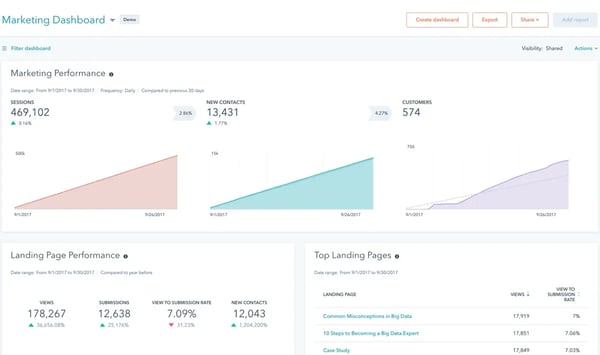
Luminar Neo stands out to me for how effortlessly it enhances photos with AI. The range of tools for lighting, composition, and sky replacement feels intuitive, and it’s perfect for giving images a polished, professional finish without hours of manual editing.
That said, there are a few areas where it could be smoother. I’ve noticed that performance can slow down a bit during intensive tasks — especially when editing RAW files or running multiple AI adjustments at once. It’s not constant, but the lag is noticeable with larger photo batches. Occasionally, I’ve also run into minor glitches, like the app freezing or an AI feature not activating correctly, though restarting usually resolves it. The pricing structure can be a little confusing, too, since certain add-ons are sold separately, which may make it feel less straightforward at first.
Even with these small hiccups, Luminar Neo remains one of my go-to tools for creative editing. Its AI-driven capabilities, modern design, and overall output quality make it a great choice for photographers who want professional results with less effort.
What I like about HubSpot Marketing Hub:
- The drag-and-drop email campaign editor is one of the most valuable features. It allows me to create visually appealing emails without any advanced design skills, and the A/B testing functionality ensures that I can continuously optimize campaigns for better performance.
- The ability to clone components with a single click is a huge time-saver. It helps me maintain consistency across my marketing materials by quickly replicating successful elements, boosting efficiency in my workflows.
What G2 users like about HubSpot Marketing Hub:
"I've been using HubSpot Marketing Hub daily, and it's become my go-to marketing command center. What stands out is how it packs powerful features into a system that's easy to use — everything from email campaigns to landing pages works seamlessly. The best part is how quickly you can set it up, and it integrates smoothly with almost any other tool. Despite its many capabilities, I’ve never needed to contact support because it's so intuitive. For anyone looking for a strong marketing platform without technical headaches, HubSpot Marketing Hub feels like the "easy button" for digital marketing. I’ve even discovered features I didn’t realize I needed because they’re so accessible — it’s like a Swiss Army knife where every tool is actually useful and easy to find."
- HubSpot Marketing Hub Review, Danielle W.
What I dislike about HubSpot Marketing Hub:
- The email tool feels somewhat basic, especially when it comes to advanced design customization. I often wish there were more options to incorporate complex branding elements into my emails, which would help me better reflect my brand's identity.
- The reporting tools lack sufficient customization, which limits my ability to track customer journeys or analyze the full impact of my campaigns. The platform doesn't provide enough reporting flexibility to give me the deeper insights I need to refine my marketing strategies.
What G2 users dislike about HubSpot Marketing Hub:
"The social media module is a great idea, but it’s not fully developed yet and can't replace a dedicated social media scheduling tool. The "marketing contacts" feature has also made management more complicated than before. It would be much easier if it included pre-made workflows that users could easily customize to decide who qualifies as a marketing contact. Additionally, the email templates have limited features, which could be improved for more flexibility."
- HubSpot Marketing Hub Review, Stéphanie M.
2. Insider: Best for AI-driven cross-channel customer engagement
Insider is an AI-native omnichannel experience and customer engagement platform.
One of the most powerful features is Sirius AI™, which offers AI-powered segmentation. It enables me to categorize my audience with advanced algorithms and send personalized messages at the optimal moment. This not only improves the relevance of my campaigns but also drives stronger customer engagement and conversion rates by targeting the right people at the right time.
Its multi-channel marketing strategy empowers me to reach customers on their preferred platforms, whether that’s email, social media, or chat. This flexibility allows me to engage users where they’re most active, making my communications more relevant and impactful across different touchpoints.
The smart recommender feature enhances the customer experience by delivering content that aligns with their interests. This ensures that users aren’t overwhelmed by irrelevant information, keeping my messaging focused and impactful, which ultimately boosts engagement.
Insider’s push notifications have transformed mobile engagement for me. I can instantly re-engage users who have dropped off, bringing them back into the app with personalized and timely notifications. This has significantly improved retention and helped drive more activity within the app.
With tools like Insider, I felt I was using the best app for automating marketing tasks, from AI-powered segmentation to personalized omnichannel messaging.
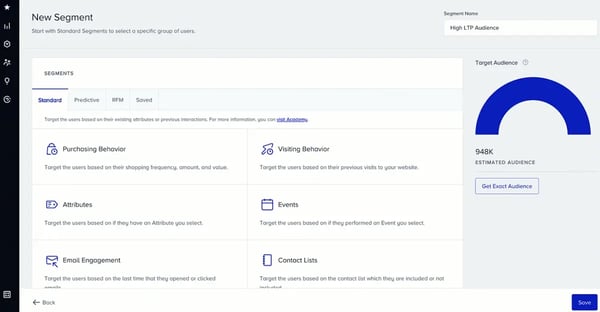
Insider is a robust, all-in-one platform that brings together customer data, automation, and personalization in a really cohesive way. I’ve found its segmentation and targeting capabilities particularly strong, helping tailor experiences across multiple channels with impressive precision.
That said, getting started can take a little time. The wide range of features, while powerful, can feel a bit overwhelming at first, especially when setting up campaigns from scratch. I also noticed that connecting Insider to certain third-party or legacy systems sometimes required manual configurations, which added a bit of extra setup time. Web Suite and Architect are both excellent tools on their own — Web Suite enables seamless web communication, and Architect helps design sophisticated cross-channel workflows — but integrating them fully took some additional effort to make them work together smoothly.
Even so, once everything is set up, Insider delivers a comprehensive and highly effective marketing experience. Its ability to unify data, personalize engagement, and automate complex campaigns makes it a valuable platform for businesses looking to elevate customer journeys.
What I like about Insider:
- Insider’s multi-channel marketing strategy has greatly enhanced my ability to reach customers on their preferred platforms. This flexibility ensures my messages are more relevant and impactful, engaging users across email, social media, and chat.
- AI-powered segmentation is incredibly effective in targeting the right audience with personalized messages. By sending the right content at the right time, I’ve seen a noticeable increase in engagement and conversion rates, improving the success of my campaigns.
What G2 users like about Insider:
"We've been using Insider to enhance the customer experience on our webshop, both on desktop and mobile, by utilizing its web suite. Through A/B testing, we gathered customer data to see if certain features worked for our webshop. Additionally, Insider offers a user-friendly interface, useful segmentation tools, responsive customer support, and detailed analytics that support our data-driven campaigns."
- Insider Review, Demi P.
What I dislike about Insider:
- The wide array of features can be overwhelming, especially when I'm trying to navigate the platform or create a campaign from scratch. Learning about some advanced features can take a lot of time, which can be challenging for smaller teams without dedicated resources.
- I’ve also faced challenges with integration, particularly when connecting Insider to third-party tools. The process required manual setups or workarounds, adding complexity and time to the integration, which made it more difficult than expected.
What G2 users dislike about Insider:
"During the initial onboarding, we felt that our website's specific needs weren’t fully met, with incomplete site mapping and technical errors in conversion tracking. Additionally, some Customer Success Managers could benefit from considering the perspective of the company they are advising, offering personalized suggestions to improve the performance of Insider campaigns, rather than just suggesting new campaign ideas."
- Insider Review, Guillian F.
3. ActiveCampaign: Best for advanced email marketing and AI automation
ActiveCampaign is a robust AI-powered email and marketing automation tool that suggests, personalizes, and validates complex marketing campaigns. If you’re weighing what's the best marketing automation software for startups, ActiveCampaign’s approachable learning curve, strong community, and flexible pricing make it a smart early choice that still scales.
From the start, I noticed how intuitive and user-friendly the interface is, which made it easy to navigate the platform and get things done efficiently. ActiveCampaign University was particularly helpful in deepening my understanding of the tool, offering a wealth of information about how to use the tool. The community forums were excellent resources for troubleshooting issues, providing valuable insights from other users. I also really appreciated the designated hours with an expert, which allowed me to learn directly from a specialist and get answers to any questions I had.
One of the standout features for me was the range of tools available for email campaign creation and management. I found advanced options like A/B testing to be incredibly useful for refining my campaigns. The ability to segment email lists and send personalized automation to different groups gave me the flexibility to create more targeted content.
The visual automation builder was another highlight. It’s incredibly intuitive, allowing me to design complex customer journeys with ease using a simple drag-and-drop interface. It felt like I had full control over the flow of my campaigns without having to worry about complicated coding or setups.
Additionally, behavioral tracking was a game-changer. It provided deep insights into how my contacts interacted with my emails, website, and other touchpoints, enabling me to make data-driven decisions that improved my overall marketing efforts.
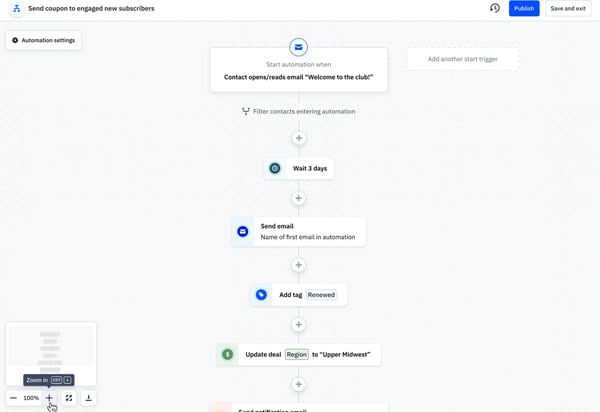
One thing I really appreciate about the platform is how intuitive it feels to use. Setting up campaigns, tracking performance, and managing automation all flow naturally, which makes day-to-day work much easier and more efficient.
That said, there are a few areas where it could improve. The email template library, while well-designed, feels a bit limited for frequent users — after a while, the options start to feel repetitive. Adding new templates more regularly would make campaign design even more engaging. I also noticed that building custom reports takes a few extra steps; pulling specific data points sometimes required more clicks than expected. It’s a small thing, but simplifying that process would help save time. Lastly, the mobile app is handy for quick updates, though it doesn’t quite match the flexibility of the desktop version. Managing campaigns on the go works fine for light edits, but more advanced functionality would make it even better.
Still, the platform remains one of the most user-friendly and effective tools I’ve used for managing marketing campaigns. Its clean interface and strong automation features make it a reliable choice for teams that value both simplicity and performance.
What I like about ActiveCampaign:
- The intuitive, user-friendly interface made it easy for me to navigate and complete tasks efficiently. ActiveCampaign University and the community forums were invaluable resources, helping me deepen my understanding of the tool and troubleshoot any issues I encountered.
- The visual automation builder stood out for its simplicity and flexibility. It allowed me to design complex customer journeys using a drag-and-drop interface, giving me full control over my campaigns without the need for coding.
What G2 users like about ActiveCampaign:
"I love how straightforward the workflows are. I haven't yet encountered an automation that I couldn't create using ActiveCampaign. Over the past five years, I've migrated myself and four other clients to ActiveCampaign, with contact lists ranging from a few hundred to 50,000. They’ve always been personable and helpful when issues or questions arise. I’ve especially appreciated being able to reach a real person when facing technical problems, and I love the recent updates that have made tagging and segments more user-friendly. These improvements have helped my clients understand the platform better. I’ve built extensive sales, onboarding, and client CRMs using the deals feature, and my client loved it. Her entire team used it, and it was seamless to integrate into their rapidly growing coaching business."
- ActiveCampaign Review, Elie R.
What I dislike about ActiveCampaign:
- The selection of email templates felt somewhat limited, which became repetitive for frequent users like me. It would have been great to see new, fresh templates added more regularly to keep things engaging.
- Creating custom reports was a bit challenging due to the extra clicks required to extract specific data points. This added complexity made it more time-consuming than necessary to pull the precise information I needed for my campaigns.
What G2 users dislike about ActiveCampaign:
"I wish there was an option to store additional client information. It would be really helpful if users could upload files in the forms builder so I can collect more details for my business. This feature would streamline my client onboarding process."
- ActiveCampaign Review, Melanie S.
4. Braze: Best for real-time customer messaging across multiple channels
With Braze, I could schedule alerts and mobile push notifications days or even weeks in advance. This allowed me to set up consistent communication with my audience without constant manual intervention.
Braze sits among the leading marketing automation platforms for customer engagement, thanks to BrazeAI™, granular targeting, and a canvas builder that orchestrates multi-channel journeys in real time.
What stood out, even more, was BrazeAI™, which helped me tailor experiences, content, recommendations, and more to create unique interactions for every customer — all at scale. This level of customization ensured that every message resonated with the recipient, making interactions more impactful.
The canvas builder was super intuitive and helped me design multi-channel touchpoints for users at different journey stages. This feature was particularly helpful in building structured, automated workflows that maintained consistency across channels while dynamically adapting to user behavior.
Braze’s engagement metrics dashboard made campaign analysis seamless. I could quickly assess performance at a glance or dive deeper into specific campaign data to identify trends. The insights were invaluable in helping me refine content and optimize strategy based on real-time user behavior.
Using Liquid, an open-source template language developed by Shopify and written in Ruby, within Braze helped me pull user profile data into messages and customize it. This feature elevated personalization to a whole new level by dynamically inserting user-specific content into communications.
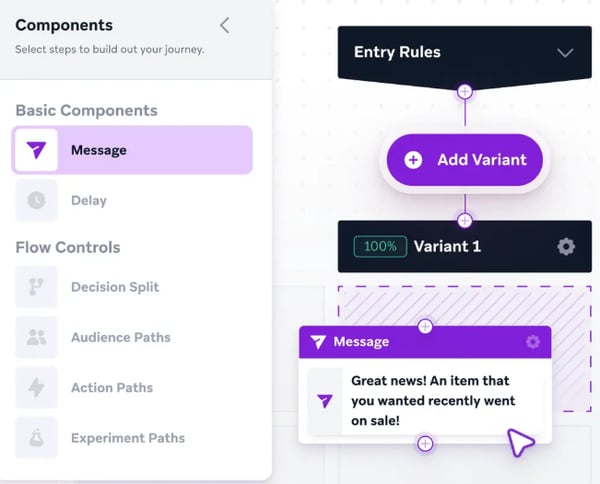
One thing I genuinely appreciate about Braze is its powerful automation and personalization capabilities. The platform makes it easy to design multi-channel campaigns and deliver messages that truly resonate with different audience segments. Its real-time engagement tools are also a big plus, helping teams stay connected with users across email, mobile, and web.
That said, there are a few areas where Braze could improve. The segmentation tool, while advanced, didn’t always categorize users as precisely as I wanted — segment calculations took a bit longer to load, and creating lists felt less intuitive compared to other platforms I’ve tried. I prefer the flexibility of uploading external lists like CSV files, but that process wasn’t as seamless as I’d hoped. Reporting is another area with room for refinement; while the data is comprehensive, extracting specific numbers sometimes took extra effort, and the cap on historical data made long-term analysis a little challenging. As for the HTML editor, it offers full control, which is great for technical users, but it’s less forgiving for those with limited coding experience. The drag-and-drop editor, on the other hand, simplifies things nicely — though it could use a few more customization options.
Still, Braze stands out for its depth, scalability, and ability to execute complex, personalized campaigns. For marketers looking to craft data-driven customer journeys with precision, it remains one of the most capable platforms I’ve used.
What I like about Braze:
- With Braze, I can schedule alerts and mobile push notifications well in advance, allowing me to set up consistent communication without manual intervention. This has helped me streamline my marketing efforts and maintain a steady flow of engagement with my audience.
- The canvas builder is incredibly intuitive, enabling me to design multi-channel touchpoints that adapt to users' behavior. It has been essential in building structured, automated workflows that ensure consistency across channels while dynamically adjusting to the user's journey.
What G2 users like about Braze:
"Braze is an incredibly intuitive and user-friendly platform that allows our teams to easily execute our ideas. I've used Braze for over 5 years across multiple industries, and the platform continues to evolve and innovate, maintaining its position as the industry leader. What I appreciate most about Braze, aside from being a great platform, is the exceptional support from our Customer Success team. They help with problem-solving and campaign ideation and ensure we meet our set goals."
- Braze Review, Meghan H.
What I dislike about Braze:
- The segmentation tool lacks the precision I need when categorizing users based on specific properties. Additionally, the segment calculations take a long time to load, which has slowed down my ability to optimize campaigns quickly.
- The reporting capabilities could be improved, as I’ve found it challenging to extract the exact numbers I need, even though the data is available. The cap on historical data has also restricted my ability to perform long-term behavioral analysis, which is a significant limitation for me.
What G2 users dislike about Braze:
"Braze needs significant improvement in its reporting and analytics capabilities. While they expect users to export data and analyze it on another platform, this adds friction and extra work. Revenue reporting, which is crucial for executive leadership, also needs enhancement. Additionally, Last Click reporting is critical, and Braze is severely lacking in this functionality."
- Braze Review, Alex C.
5. Thryv: Best marketing automation platform for small businesses
I tested Thryv as a CRM system for small businesses, and I found it to have several useful features for managing customer information and simplifying marketing tasks. Thryv shines as the best marketing automation software for small businesses, combining CRM, scheduling, and customer engagement tools in one dashboard.
One feature that stood out to me was the online reputation management. Thryv tracks customer reviews across various platforms, making it easy to monitor feedback and respond to both positive and negative reviews. This feature helped me understand how businesses could manage their online presence and stay on top of customer sentiment with minimal effort.
The social media scheduling and analytics tools were also impressive. Thryv integrates multiple social media platforms, allowing users to plan posts, track engagement, and analyze results all from a single interface. This centralization made managing social media activities much more efficient for a newbie like me and saved a lot of time by keeping everything in one place.
Another useful feature was the AI caption generator. I used it to create creative captions for social media posts, which helped keep content engaging and fresh. The tool also made it easier to add clever phrases and witty remarks, which added some personality to the posts.
The website designer also caught my attention. It was user-friendly and didn’t require coding skills, making it easy to design and update a website. I found this feature to be particularly helpful, as it simplified the process of creating a professional-looking website without needing any technical knowledge.
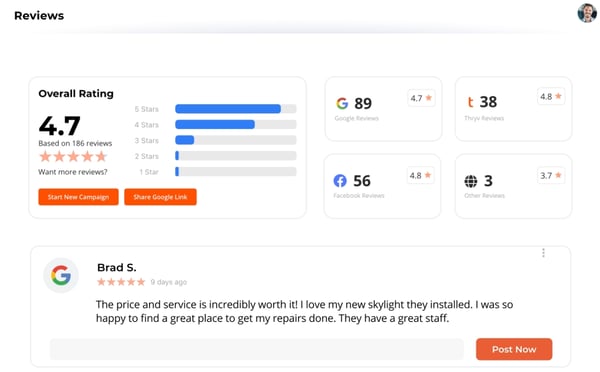
Thryv brings a lot of value to small and mid-sized businesses looking for an all-in-one platform to manage customers, marketing, and scheduling. I really liked how it centralizes key functions, making day-to-day operations smoother and helping teams stay organized.
That said, there are a few areas where Thryv could be more flexible. One limitation I noticed is that marketing campaigns are restricted to a 50-mile radius, which could feel narrow for businesses aiming to reach audiences beyond their immediate area.
I also found that the reporting tools, while helpful, would benefit from more customization options for tracking and analyzing customer data in greater depth. In terms of communication, Thryv handles customer information well but lacks a built-in email drip system, so I had to use third-party tools for email campaigns.
Lastly, lead pipeline management could use a few enhancements. While the tagging and sorting features are useful, having more intuitive ways to track campaign activity and follow up with leads would make the process more seamless.
Even so, Thryv remains a reliable and efficient platform for managing customer relationships and automating business workflows. For teams that want a single place to handle marketing, CRM, and scheduling, it’s a strong option worth exploring.
What I like about Thryv:
- The online reputation management feature stood out during my testing. It made it easy for me to track and respond to customer reviews across various platforms, helping me manage the business's online presence and stay on top of customer sentiment with minimal effort.
- The social media scheduling and analytics tools impressed me as well. Integrating multiple platforms into one interface allowed me to plan posts, track engagement, and analyze results all in one place, which made social media management much more efficient for someone new.
What G2 users like about Thryv:
"The professionals at Thryv take the time to understand what your business does and what it needs, and they recommend products that will provide the most value. They are honest about what you truly need. The customer support has been excellent in helping us get set up, making the implementation process very smooth. Their product integrates well with the systems we already use, making it easy to adopt. I was impressed by the number of features they offer that helped streamline our online business operations."
- Thryv Review, Andrea W.
What I dislike about Thryv:
- One major limitation I noticed was that marketing campaigns were restricted to a 50-mile radius. This felt limiting, especially for anyone wanting to target a larger audience or run broader campaigns.
- The lead pipeline management could be improved. Sorting contacts using tags and basic information wasn’t sufficient, and there was no way to track which marketing campaigns had been sent to individual contacts, making it harder to follow up effectively.
What G2 users dislike about Thryv:
"The reporting feature has some significant gaps, especially when it comes to providing the business owner with the information needed to make informed decisions. For example, the conversion rate is one area that’s lacking and should be easier to track."
- Thryv Review, Karin C.
6. Intuit Mailchimp: Best for building personalized, AI-powered campaigns
Intuit Mailchimp offers an intuitive, all-in-one platform for email marketing, automation, audience management, and analytics. Having tested it, I can confidently say that the tool is incredibly easy to set up. The guided setup process is particularly helpful for beginners like me. It helped me quickly get started without feeling overwhelmed by all the features.
If your main focus is email, Mailchimp may be the best software for automating email marketing, thanks to its intuitive design tools and automation triggers.
One of Mailchimp's standout features is Intuit Assist. With its AI-powered automation, I could effortlessly connect with customers who abandoned carts and retarget them. The platform even generated fully built emails that I only had to review and publish, saving me time while ensuring highly effective, data-driven campaigns.
The drag-and-drop email editor tool makes designing emails easy and stress-free, even for someone with little design experience. I found that creating visually appealing emails was a breeze, as the editor allows for seamless integration of text, images, and links. It's perfect for users like me who want professional-looking campaigns without spending too much time on complex design elements.
The tool also offers email automation, which is incredibly helpful. Setting up automation, such as welcome emails or reminders, was super simple. It's great for businesses that work under time pressure, as they wouldn’t need to manually send these emails for each new user or customer action.
Another feature I appreciated during my testing was the integration with social media and e-commerce platforms. By syncing Mailchimp with social media accounts and e-commerce platforms, all marketing efforts can be consolidated in one place. This is a major plus for small teams, as it helps them maintain consistency across various channels while also allowing them to track performance and customer engagement more easily.
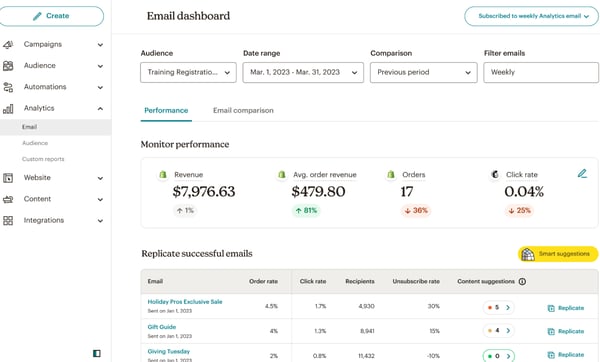
Mailchimp continues to stand out for its ease of use and approachable design. I found it simple to set up campaigns, manage contacts, and track engagement — all without needing advanced technical knowledge. The templates are clean, the analytics are straightforward, and it’s easy to get started, even for beginners.
That said, I did come across a few areas that could be improved. While Mailchimp lets me replicate campaigns to resend them, it would be even more convenient to have an option to automatically resend emails only to those who didn’t open the first one. The extra duplication step adds a bit of time to the process. Customization, while generally flexible, also has its limits — I found that certain advanced design tweaks weren’t possible, which might feel a bit restrictive for teams that prefer full creative control. Lastly, scalability stood out as a consideration. The platform is excellent for small and mid-sized businesses, but it can feel somewhat limited for larger, more complex campaigns that require deeper automation or advanced segmentation.
Even so, Mailchimp remains one of the most beginner-friendly and effective email marketing tools out there. It’s reliable, intuitive, and a great starting point for growing businesses that want to build meaningful connections through email.
What I like about Intuit Mailchimp:
- The setup process was incredibly easy, and the guided steps helped me get started without feeling overwhelmed. It was perfect for someone like me who’s new to email marketing, enabling me to dive right in and start using the platform quickly.
- The drag-and-drop email editor was a standout feature for me. It allowed me to create visually appealing emails with ease, even without design experience, and seamlessly integrate text, images, and links to produce professional-looking campaigns without a lot of effort.
What G2 users like about Intuit Mailchimp:
"MailChimp's integrations and add-ons make it much more flexible compared to other options. I've connected it with our website signup form and Really Simple Syndication (RSS) feed so visitors can sign up and automatically start receiving our best content via email every week. The pricing is also very reasonable, especially for small and medium-sized businesses just getting started with email marketing."
- Intuit Mailchimp Review, Cate C.
What I dislike about Intuit Mailchimp:
- I found the attachment size limitation to be a downside during my testing. With only 10 MB allowed, I often had to reduce the quality of my content to fit the size, which could be challenging for businesses working with larger creative files.
- Scalability was a concern, as the platform seemed more suited to small to medium-sized businesses. As my testing progressed, I realized the tools available didn’t offer much room for growth, which could become a limitation for businesses with expanding or complex needs.
What G2 users dislike about Intuit Mailchimp:
"Creating lists takes some extra time, and a simpler way of adding contacts to a list or group would be much more efficient."
- Intuit Mailchimp Review, Roxana N.
7. CleverTap: Best for real-time analytics and customer retention
CleverTap is an all-in-one customer engagement platform that brings together multiple tools and communication channels in one place.
One feature that stood out to me was Clever.AI, which helps with intent-based segmentation. It allowed me to identify the segments most likely to convert, predict churn, and even forecast business outcomes.
During my testing, I appreciated how seamlessly CleverTap integrates rich media, banners, and images into push and email campaigns. This feature enhances the visual appeal of messages, making them more engaging and impactful. Whether testing static banners or interactive visuals, the platform ensures smooth integration, which adds a polished touch to every campaign.
Another standout feature is the A/B testing functionality across multiple communication channels. I was able to experiment with push notifications, journey notifications, in-app messages, interstitials, and marketing emails—all within the platform. This ability to test and optimize different variations can help businesses refine engagement strategies and improve overall campaign performance.
The level of insight it provides into user behavior is remarkable. Features like cohort analysis and recency, frequency, and monetary (RFM) segmentation allow for real-time tracking of user trends and retention strategies. I was particularly impressed by how TesseractDB™ enhanced the platform's AI/ML models, providing granular data insights and an extended data lookback period, which really helped me make more informed decisions.
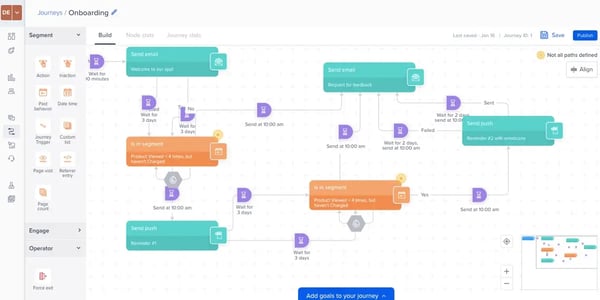
One thing I really appreciate about CleverTap is its powerful analytics and automation capabilities. The platform provides detailed insights into user behavior, helping teams design personalized journeys and improve engagement over time. It’s especially strong when it comes to real-time data tracking and campaign optimization.
That said, there are a few areas where CleverTap could improve. I found the flexibility in segment creation for automated journeys to be a bit limited — the segmentation logic felt somewhat restrictive, especially when trying to use OR conditions or more complex event triggers. This made it harder to build nuanced targeting strategies without extra workarounds. Another area that could use refinement is data import. Currently, uploading CSV files is the main method, and while it works, having an option to import data directly through SQL would make the process smoother and faster. Lastly, the learning curve is noticeable at first. Though the platform is feature-rich, it takes time to get comfortable navigating everything, and the training materials could be a bit more interactive to help new users onboard easily.
Even so, once you get past the initial setup phase, CleverTap proves to be an incredibly powerful marketing automation tool. Its combination of detailed analytics, user segmentation, and real-time engagement makes it a strong choice for teams focused on data-driven growth.
What I like about CleverTap:
- The platform’s analytics and engagement capabilities provided remarkable insight into user behavior. Features like cohort analysis and RFM segmentation allowed me to track user trends in real time, making it easier to optimize retention strategies and drive conversions effectively.
- A/B testing across multiple communication channels was a game-changer. I experimented with push notifications, in-app messages, interstitials, and marketing emails, all in one place, allowing me to refine engagement strategies and improve campaign performance seamlessly.
What G2 users like about CleverTap:
"CleverTap excels at delivering personalized and data-driven marketing automation at scale. Its powerful segmentation tools help target specific customer groups with tailored campaigns, significantly improving user engagement. The real-time analytics dashboard provides actionable insights, enabling quick, data-backed decisions. I also appreciate its ease of use, with intuitive tools for managing push notifications and in-app messages."
- CleverTap Review, Vineet K.
What I dislike about CleverTap:
- I found the segmentation logic to be somewhat restrictive when building automated journeys. The limited flexibility in using OR conditions and complex event triggers made it challenging to create advanced targeting strategies without workarounds.
- The lack of an SQL query option for importing user data slowed down the process. Since the platform relies on CSV file uploads, I had to spend extra time on manual data management, which could be streamlined with a direct SQL import feature.
What G2 users dislike about CleverTap:
"Some features are complicated, and for those without strong technical skills or a supportive development team, they can be difficult to navigate. Additionally, the in-app banner creative tool has some limitations."
- CleverTap Review, Daniel O.
8. Iterable: Best cross-channel marketing platform for large teams
Iterable really lived up to its name with its constant product iterations. The platform’s development team is always pushing new features and updates at a rapid pace, ensuring that the tool evolves alongside industry trends. Iterable's Journey Assist and advanced segmentation make it a top-rated marketing automation software for better sales funnels, helping guide users from click to conversion.
The AI-powered Journey Assist was a standout feature that really made Iterable shine. With just a little prompting from me, the tool generated new journeys from scratch, saving me a lot of time and effort. It allowed me to visually map out user journeys in a way that was incredibly easy to understand. The clear flow map helped me visualize each step of the customer journey, making it simple to design and optimize campaigns.
Setting up targeted email campaigns was a breeze, thanks to Iterable’s powerful audience segmentation features. I could segment audiences based on behavior, preferences, and demographics, ensuring that I sent tailored content to the right people at the right time. The ability to target my audience so precisely allowed me to increase engagement and conversions, which made the platform incredibly valuable for my campaigns.
One of the platform's greatest strengths was its ability to integrate multiple communication channels. From emails to SMS and push notifications, Iterable allowed me to manage everything within one platform, which streamlined the entire process. The integration made it so much easier to run cross-channel campaigns, and the fact that it was all handled in a single interface was a huge time-saver.
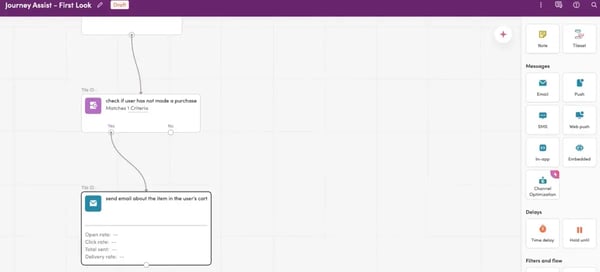
One thing I really liked about Iterable is how well it handles multichannel marketing. The ability to coordinate email, SMS, and push campaigns from a single platform is incredibly useful. It helps create a more cohesive customer experience and ensures that every message feels consistent across touchpoints.
That said, I did come across a few areas that could be improved. For one, unless you’re familiar with HTML, the WYSIWYG and drag-and-drop email builders can feel a little limiting. They’re great for simple layouts, but for more advanced designs, I often had to rely on a developer, which added a few extra steps. The reporting and analytics tools, while insightful, could also offer more flexibility.
I found that building custom reports or filtering data across campaigns sometimes required workarounds, which made it harder to get very specific insights. Lastly, the documentation could be more comprehensive. Iterable’s support articles are helpful, but I often needed to reach out to support for deeper guidance — especially when working with personalized handlebars, where clearer examples would have made a big difference.
Still, once you get familiar with the platform, Iterable’s strengths really shine. Its automation, personalization, and cross-channel coordination make it a powerful choice for marketing teams looking to scale and optimize their customer engagement strategy.
What I like about Iterable:
- The journey program was one of the most valuable features for me during my testing. It allowed me to visually map out user journeys, which made designing and optimizing campaigns much simpler and more effective, especially when collaborating with my team.
- Iterable’s powerful audience segmentation made setting up targeted email campaigns incredibly easy. I could precisely target audiences based on behavior, preferences, and demographics, which helped increase engagement and conversions for my campaigns.
What G2 users like about Iterable:
"One of the great qualities of Iterable is that they not only listen to what marketers need, but they also anticipate those needs and take action by continuously adding new features and tools to the platform. I view my account manager and solutions architect as an extension of my team. They’re always ready to jump in and roll up their sleeves for a working session whenever needed."
-Iterable Review, Ivory R.
What I dislike about Iterable:
- The WYSIWYG and drag-and-drop email builders can be limiting for users without HTML experience. While they work well for simple designs, creating more intricate layouts requires coding or a developer's assistance, which can slow down the process.
- The documentation could use some refinement, particularly when it comes to personalized handlebars. While the support articles offer basic explanations, they often lack sufficient detail, requiring me to reach out to support for more clarity, which could be time-consuming.
What G2 users dislike about Iterable:
"Iterable’s value would increase significantly if they focused more on the analysis aspect of campaigns and journeys. Additionally, setting up campaigns in 12 different languages currently requires a lot of manual work. Improving how locales are managed and streamlining the process for uploading strings in different languages would make it much more efficient."
- Iterable Review, Rasa .
9. WebEngage: Best for unified customer insights and engagement
WebEngage offers a comprehensive marketing automation platform packed with features that streamline campaign management and engagement.
It was super easy to integrate WebEngage on both app and web platforms. Unlike some tools that require extensive development effort, integrating WebEngage’s SDKs was surprisingly simple. I was able to set everything up in under 10 minutes.
The ability to create highly specific audience segments in no time helped automate much of the marketing workflow. I found it particularly useful when setting up targeted campaigns, as it eliminated the need for manual intervention.
The platform also excels in its push notification capabilities. I was able to send both real-time and delayed notifications with a high degree of customization. The ability to automate notifications for different user groups made it much easier to manage offers, feature announcements, and event-based messages efficiently.
Another area where WebEngage really impressed me was its quick report generation. The ability to generate reports within five minutes was incredibly valuable, especially when I needed to analyze campaign performance on short notice. One of the features I found particularly useful was day-wise, week-wise, and month-wise campaign tracking. This functionality made it incredibly easy to analyze campaign performance over different timeframes. Instead of manually sifting through data.
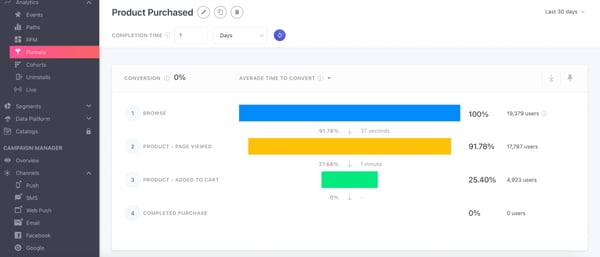
One thing I genuinely appreciate about WebEngage is how comprehensive it is. The platform brings together customer engagement, automation, and analytics in one place, making it easier to design and execute complex campaigns. Once everything is set up, it becomes a powerful tool for managing multi-channel communication effectively.
That said, I did notice a few areas that could use refinement. The platform does come with a learning curve — new team members might initially find it a bit overwhelming because of the number of features available. It takes some time and training to get fully comfortable navigating everything. The pre-designed templates are convenient, but I found the customization options somewhat limited, especially when creating highly interactive campaigns that needed more flexibility. Lastly, I noticed occasional dashboard slowdowns. While not frequent, the longer loading times could be inconvenient during moments when I needed to make quick edits or check reports.
Even so, once you get past the initial adjustment phase, WebEngage proves to be a highly capable marketing automation platform. Its depth of features and ability to personalize communication at scale make it a strong choice for teams focused on improving customer engagement.
What I like about WebEngage:
- Integrating WebEngage on both app and web platforms was incredibly simple. Unlike other tools that require extensive development work, I was able to set everything up in under 10 minutes using their SDKs, making the onboarding process seamless.
- The platform's audience segmentation and push notification capabilities significantly streamlined my marketing efforts. Being able to automate targeted messages for different user groups saved me time and ensured that my campaigns were highly relevant without requiring manual intervention.
What G2 users like about WebEngage:
"WebEngage has brought together various analytical capabilities and marketing communication channels under one platform, significantly improving our team's efficiency and reducing the chances of missing timely communication. Its seamless integration and access to advanced marketing tools at affordable prices make it a valuable solution."
- WebEngage Review, Saksham K.
What I dislike about WebEngage:
- The platform has a steep learning curve, which might make it challenging for new team members to get started. While WebEngage is powerful, it requires some initial training to fully leverage its capabilities, which can slow down adoption.
- I found the dashboard's performance to be inconsistent, with occasional slow loading times or even getting stuck on the loading screen. This was challenging, especially when I needed to make quick changes or access reports urgently, as it disrupted workflow efficiency.
What G2 users dislike about WebEngage:
"WebEngage could improve by adding an option to set a specific target limit for one-time campaigns, which would help control the number of messages sent. Additionally, onsite surveys could be made more user-friendly by allowing design edits at certain intervals, as the current process relies heavily on coding, making it difficult for users to make changes."
- WebEngage Review, Dhivagar R.
10. MoEngage: Best for personalized omnichannel customer journeys
MoEngage is a robust customer engagement platform that enables seamless communication across multiple channels.
Sherpa's AI engine makes it quick and easy to build contextual and personalized customer journeys across 11 channels. I found this particularly useful for reaching customers wherever they were most active. Coordinating messages across different channels helped create a more consistent user experience and significantly improved engagement rates.
An integration that stood out was WhatsApp campaigning, which added an extra layer of communication. Many users prefer WhatsApp for direct messaging, so having the ability to reach them through this channel was a game-changer. The process of setting up and managing WhatsApp campaigns was straightforward, and it helped improve customer interaction significantly.
Another standout feature is user segmentation, which makes it easy to categorize audiences based on their behaviors, preferences, and interactions. Whether I wanted to send personalized promotions or tailor notifications based on past interactions, the segmentation tool provided the flexibility needed to enhance campaign effectiveness.
Another area where MoEngage excels is email deliverability. It allowed me to send over 5000+ emails at once, and the best part was that most of them were delivered. It also helps track open and click rates with ease. The platform’s dashboard provides clear, real-time analytics, making it easy to measure campaign performance at a glance. I found this especially helpful for optimizing email and push notification strategies, as it allowed me to tweak content based on actual user engagement data.
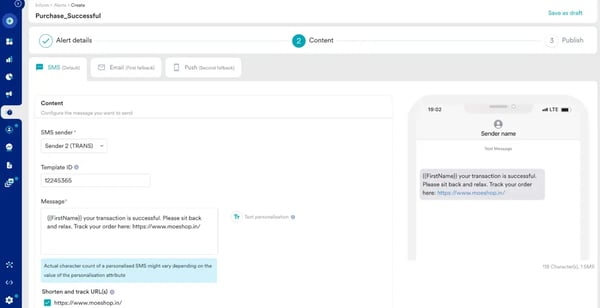
One thing I really like about MoEngage is how well it handles cross-channel engagement. From emails and push notifications to in-app messages and analytics, everything connects seamlessly. The unified view of user behavior makes it easier to personalize campaigns and deliver timely messages that actually convert.
That said, there are a few areas where MoEngage could be more polished. The email spam rate detection isn’t always precise, occasionally flagging messages incorrectly, which makes it tricky to gauge true deliverability. I also found the push notification customization a bit limited — while personalization options are solid, having more creative flexibility in design and targeting would elevate the experience. For new users, the platform’s extensive feature set can take a little time to get used to. The tools are powerful, but onboarding feels like it could be smoother with more guided walkthroughs or simplified documentation. Lastly, I noticed that when building large campaign flows, the system occasionally slowed down or lagged. While this didn’t happen often, it could interrupt the workflow during complex automation setups.
Even with these minor challenges, MoEngage remains a strong contender among marketing automation tools. Its data-driven approach, robust segmentation, and seamless multi-channel execution make it a great choice for teams looking to scale personalized customer engagement.
What I like about MoEngage:
- The omnichannel campaign capability was one of the most powerful features I tested. It allowed me to coordinate messages across email, push notifications, and in-app messaging, ensuring a seamless user experience and significantly improving engagement rates.
- The user segmentation tool made targeting specific audiences incredibly effective. I could categorize users based on their behavior and preferences, enabling me to send personalized promotions and notifications that enhanced the relevance and impact of my campaigns.
What G2 users like about MoEngage:
"MoEngage provides better analytics than its competitors with data-oriented features, user-centric components, multiple design options, and campaign customization. The support team was instrumental in helping us navigate challenges during the transition, and the onboarding session greatly assisted our team in understanding and resolving campaign-related queries."
- MoEngage Review, Hafsal M.
What I dislike about MoEngage:
- The email spam rate detection was not as accurate as I expected, which sometimes led to messages being flagged incorrectly. This made it difficult to assess true deliverability, creating a need for a more refined system to prevent misclassification of legitimate emails.
- I experienced significant lag when creating large campaign flows, which disrupted my workflow. On multiple occasions, the platform slowed down so much that I lost my changes unexpectedly, forcing me to redo work and reducing efficiency when managing complex automation.
What G2 users dislike about MoEngage:
"What I dislike about MoEngage is that learning and exploring the platform can be tricky for new users, especially when navigating all its features. Additionally, there are delays in loading campaigns when searching for them, which can be challenging."
- MoEngage Review, Cynthia D.
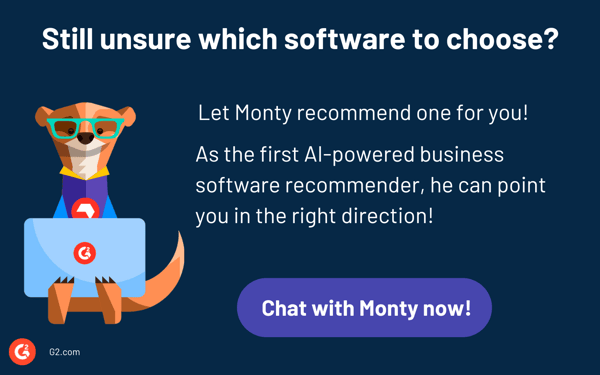
Comparison of the best marketing automation software
If you feel overwhelmed by the wealth of information about the best marketing automation software solutions, this comparison table will help you with the most important aspects:
|
Software
|
G2 Rating
|
Free trial/plan
|
Ideal for
|
| HubSpot Marketing Hub |
4.4/5 |
14-day free trial |
Businesses that seek an all-in-one inbound marketing platform. |
| Insider |
4.8/5 |
Demo available |
Marketers who want to personalize digital experiences across multiple channels. |
| ActiveCampaign |
4.5/5 |
14-day free trial |
Mid-sized businesses that need a CRM with marketing automation capabilities. |
| Braze |
4.5/5 |
14-day free trial |
Brands that focus on customer engagement across mobile and web apps. |
| Thryv |
4.6/5 |
Free plan |
Small businesses that need a CRM solution with marketing capabilities. |
| Intuit Mailchimp |
4.4/5 |
Free plan |
Businesses that seek strong email marketing and automation tools. |
| CleverTap |
4.6/5 |
30-day free trial |
Growth-driven businesses that focus on customer retention. |
| Iterable |
4.4/5 |
Demo available |
Enterprises that need cross-channel marketing automation. |
| WebEngage |
4.5/5 |
Demo available |
Businesses that aim to need a 360° view of customer journeys. |
| MoEngage |
4.5/5 |
Demo available |
Businesses that seek detailed insights into customer behavior and preferences |
Marketing automation software: Frequently asked questions (FAQs)
1. How does marketing automation software work?
Marketing automation software streamlines marketing tasks by automating repetitive processes such as email campaigns, social media posting, lead nurturing, and customer segmentation. It collects data from multiple channels to create personalized marketing messages, track engagement, and optimize campaigns for better results.
2. How to choose the right marketing automation software?
When choosing marketing automation software, consider factors like ease of use, integration capabilities with other tools, scalability, features for lead generation and nurturing, reporting tools, and pricing. It's also important to ensure the software aligns with your business needs and provides adequate support and training.
3. Which are the best free marketing automation tools?
Most of the best marketing automation tools will come at a price. However, tools like ActiveCampaign, Intuit Mailchimp, and HubSpot offer free plans or trials that allow you to assess whether they align with your business needs before committing to a purchase. Explore more free marketing automation software to find the best fit for your business.
4. Which are the best marketing automation tools for small businesses?
HubSpot Marketing Hub is one of the best marketing automation software for small businesses. It offers essential features like email marketing, lead management, and analytics, along with the scalability needed as your business grows. Thryv is another excellent marketing automation tool for small businesses. It combines essential features such as email marketing, CRM, and social media management, all in one platform.
5. Which are the best CRMs for marketing automation?
Top CRMs for marketing automation include HubSpot Marketing Hub, ActiveCampaign, Thryv, and Intuit Mailchimp. These CRMs integrate marketing automation features such as lead nurturing, email campaigns, and reporting to help businesses optimize their marketing strategies.
6. How do I implement marketing automation in my business?
To implement marketing automation, start by defining your marketing goals and selecting the right software. Integrate it with your CRM and other tools, set up automated workflows for lead nurturing, and segment your audience for targeted messaging. Monitor results, analyze performance, and continuously optimize your campaigns based on data insights.
7. What industries benefit most from marketing automation software?
Marketing automation software is widely used across industries, but it’s especially impactful for e-commerce, SaaS, real estate, education, and healthcare. These industries often deal with high volumes of customer interactions, leads, or content distribution, making automation critical for streamlining communications, nurturing leads, and personalizing messaging at scale.
8. Can marketing automation help improve customer retention?
Absolutely. By using automated workflows, segmentation, and behavior-triggered messaging, businesses can deliver timely, relevant content that keeps customers engaged. Features like loyalty programs, re-engagement campaigns, and personalized product recommendations also play a significant role in reducing churn and improving lifetime value.
9. What’s the difference between email marketing tools and marketing automation platforms?
Email marketing tools primarily focus on sending newsletters, drip campaigns, or promotions. Marketing automation platforms go further, enabling you to build complex customer journeys, score leads, track multi-channel interactions, and integrate with CRM systems. Essentially, automation platforms offer more holistic customer lifecycle management.
10. How much does marketing automation software typically cost?
Pricing varies widely depending on features, contact list size, and the provider. Entry-level plans can start as low as $20/month (e.g., Mailchimp), while enterprise solutions with advanced analytics, AI, and cross-channel automation (like Braze or Iterable) may require custom pricing. Many tools also offer free trials or freemium versions.
11. Is marketing automation suitable for startups with small teams?
Yes, many platforms are built with scalability in mind. Tools like HubSpot and ActiveCampaign are great for startups because they offer easy onboarding, drag-and-drop automation builders, and affordable plans. Startups can automate lead nurturing and email workflows without hiring a full team, making it a smart investment early on.
Practically sells itself...
The right tools can make all the difference in marketing. As I’ve learned through trial and error and a lot of coffee, marketing automation software is more than just a convenience.
If you’re wondering what the best marketing automation software for startups is, tools like Mailchimp and HubSpot offer easy onboarding, scalable features, and startup-friendly pricing to help you grow fast.
The 10 tools I’ve tested and reviewed in this article offer a variety of solutions to meet different needs, whether you're focusing on email marketing, social media management, or overall campaign performance. No matter where you are on your automation journey, these platforms can help you navigate the complexities of modern marketing with ease and precision.
So, whether you're a seasoned marketer or just starting out, now’s the time to explore these solutions and take your marketing efforts to the next level.
Looking to discover unique marketing strategies? Explore affiliate marketing software today and unlock new opportunities!
.png?width=400&height=150&name=Untitled%20design%20(56).png)












.png)



.png)
